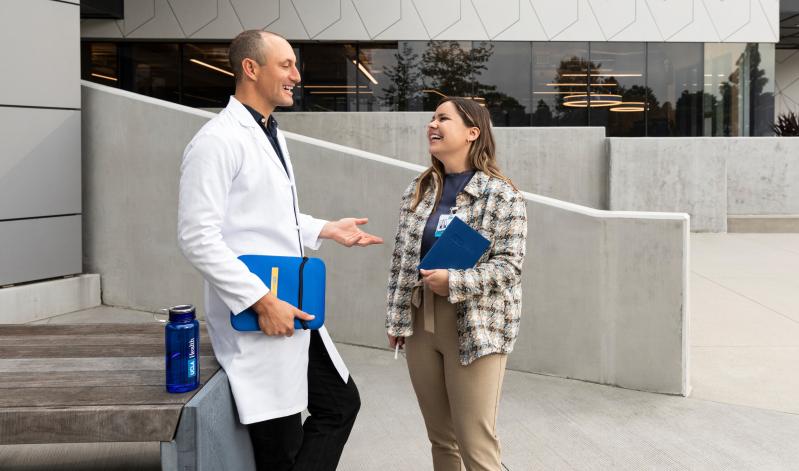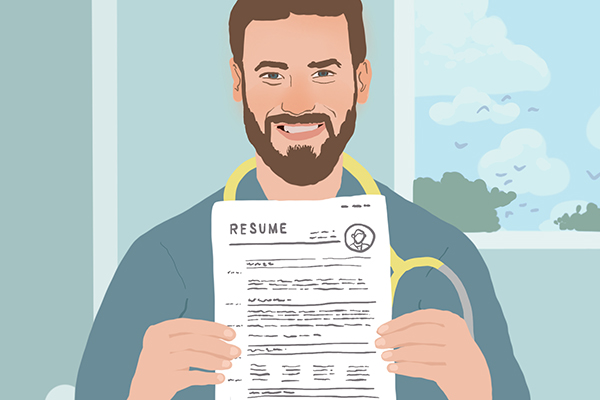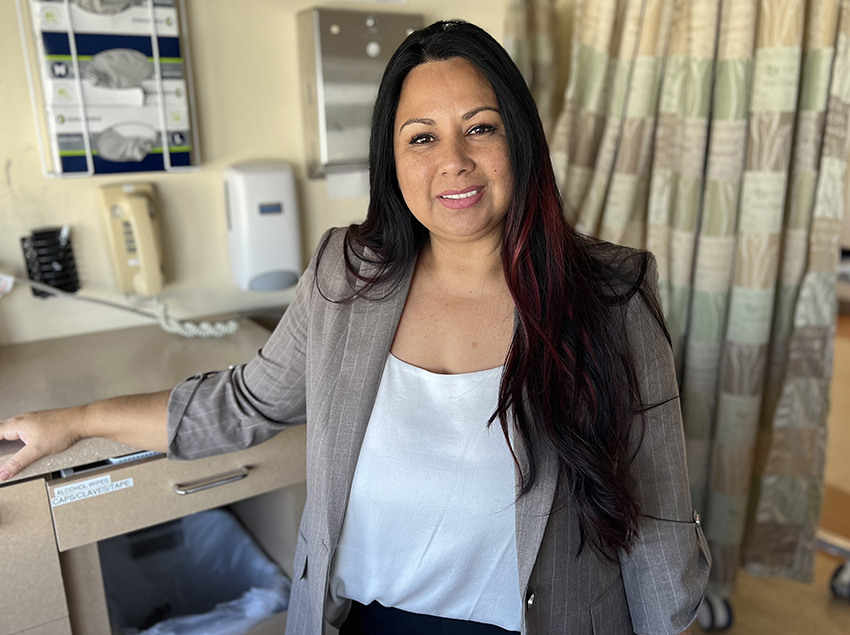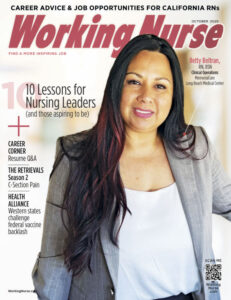Feature
Wired Hospitals: From Science Fiction to the Bedside
How local hospitals are using technology to reshape the way nurses work

A patient reports some weakness on their left side, a common warning sign of stroke. They need an expert opinion — and fast. At Martin Luther King, Jr. Community Hospital (MLKCH) in Los Angeles, the staff knows just what to do: fetch the robot!
The Virtual Consultation
No, robots aren’t yet attending medical school (we have at least a few more years before that happens). However, a growing number of hospitals like MLKCH are now using telepresence devices: robots that allow a remote clinician to examine and interact with a patient. “It sits in ICU and we can call to bring it up,” explains Michelle Querubin, RN, BSN, a telemetry staff nurse. “It is the fastest way to obtain a neurologic consult. We explain to the patient so they are not taken aback when they see the robot.”
Some telepresence devices are little more than videophones, but the one MLKCH uses is more sophisticated, even including a built-in stethoscope. “The robot can be manipulated by the neurologist,” explains Eric Thorsen, RN, an ED nurse. “There is a screen with a camera and the screen shows the neurologist’s face.” With this technology, the consultant can be there for the patient when needed even if they’re many miles apart.
“You can’t tell where the consultant is, but that doesn’t matter,” says Querubin. Innovations like this have made MLKCH one of 27 hospitals across the country selected by Hospitals & Health Networks and the American Hospital Association as 2017’s “Most Wired” facilities.
Tele-Translation
Another of MLKCH’s advanced telecommunication tools is a Martti video translator system, which connects clinicians and patients to remote interpreters who provide real-time translation. The service uses a secure wireless network and is available 24/7 to translate hundreds of languages.
MLKCH has portable Martti devices with video monitors that allow deaf patients to view sign language interpreters, but there’s also an app for the hospital’s iPads, making the technology readily available to any of the units. “It has really improved patient rapport,” Querubin says. “Even if the nurse doesn’t speak the patient’s language, quality care can be provided in a language they can understand. This is a great resource. It’s very easy and takes no time to connect.”
Aside from the broad range of languages supported, an advantage of Martti is that its translators are certified medical interpreters who can accurately communicate the nuances of treatment plans. “It makes it more comfortable for the patients,” says Querubin. “We had a patient who spoke a different language and whose family didn’t speak English either. We brought out the translator. It answered their questions about the plan of care and addressed concerns they had.”
Of course, hospitals usually have staff neurologists and some have on-staff translators, at least for certain languages. However, even if the facility has the appropriate specialist or interpreter, there’s no guarantee they’ll be on duty or nearby when they’re needed most. Telepresence systems like these help hospitals fill the gaps.
Above left: MLKCH telemetry nurse Michelle Querubin has to warn patients so they aren’t startled by the robot. Center: Pomona Valley Hospital Medical Center’s Karen Blessing and Kim Ranney take digital photos for a newborn’s ID. Right: Barbara Gross, director of the Heart Institute at Children’s Hospital Los Angeles, says hospitals need to think about interoperability before rolling out new technologies.









